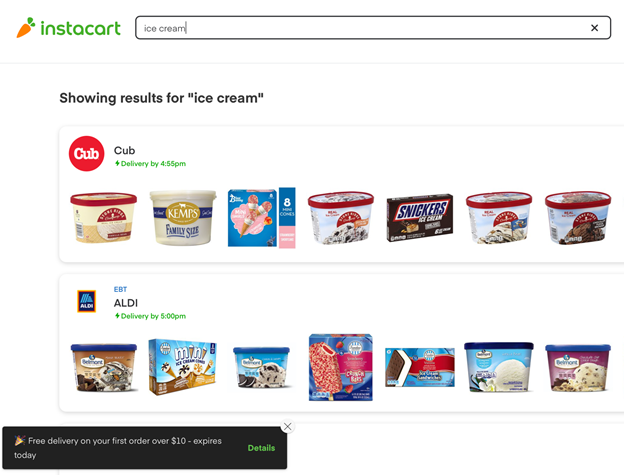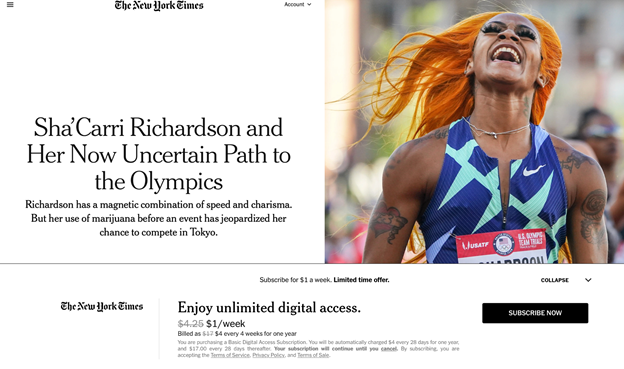MENU
Starting a Business
- Best Small Business Loans
- Best Business Internet Service
- Best Online Payroll Service
- Best Business Phone Systems
Our Top Picks
- OnPay Payroll Review
- ADP Payroll Review
- Ooma Office Review
- RingCentral Review
Our In-Depth Reviews
Finance
- Best Accounting Software
- Best Merchant Services Providers
- Best Credit Card Processors
- Best Mobile Credit Card Processors
Our Top Picks
- Clover Review
- Merchant One Review
- QuickBooks Online Review
- Xero Accounting Review
Our In-Depth Reviews
- Accounting
- Finances
- Financial Solutions
- Funding
Explore More
Human Resources
- Best Human Resources Outsourcing Services
- Best Time and Attendance Software
- Best PEO Services
- Best Business Employee Retirement Plans
Our Top Picks
- Bambee Review
- Rippling HR Software Review
- TriNet Review
- Gusto Payroll Review
Our In-Depth Reviews
- Employees
- HR Solutions
- Hiring
- Managing
Explore More
Marketing and Sales
- Best Text Message Marketing Services
- Best CRM Software
- Best Email Marketing Services
- Best Website Builders
Our Top Picks
- Textedly Review
- Salesforce Review
- EZ Texting Review
- Textline Review
Our In-Depth Reviews
Technology
- Best GPS Fleet Management Software
- Best POS Systems
- Best Employee Monitoring Software
- Best Document Management Software
Our Top Picks
- Verizon Connect Fleet GPS Review
- Zoom Review
- Samsara Review
- Zoho CRM Review
Our In-Depth Reviews
Business Basics
- 4 Simple Steps to Valuing Your Small Business
- How to Write a Business Growth Plan
- 12 Business Skills You Need to Master
- How to Start a One-Person Business
Our Top Picks
Table of Contents
E-commerce website visitors are highly promising leads who are likely interested in your products. However, they may leave your site before engaging further with your brand or purchasing anything. Pop-ups are a way to enhance your relationship with leads and customers who visit your website. They’re an essential digital marketing strategy that can help increase your customer base, drive engagement and boost your bottom line. We’ll explain more about email pop-up benefits and share best practices for using them strategically to increase conversion rates.
What is an email pop-up box?
An email pop-up box is a message that appears to website visitors as they browse your online store. A visitor’s behavior triggers these automated messages; they’re designed to compel the visitor to engage further with your brand through explicit calls to action (CTAs). Pop-ups ask for website visitors’ email addresses in exchange for a desirable benefit, such as a promo code or access to exclusive content. They can also encourage a shopper to complete their purchase.
Email pop-up benefits
Pop-ups are a compelling e-commerce marketing strategy that can boost brand awareness and business growth. Here are some of the benefits of an email pop-up campaign:
- Pop-ups can compel website visitors to stay and buy. Pop-ups are presented to potential customers at a key decision-making moment as they explore your website. Seeing a pop-up at the right time can make the difference between further engaging with your site and moving on.
- Pop-ups grab customers’ attention. Pop-ups are an excellent vehicle for attention-grabbing images, headlines and offers. Because customer attention can shift in seconds, businesses must prove their value quickly. Pop-ups are a great way to accomplish this.
- Pop-ups improve retention and conversion. When done well, pop-ups give digital marketing campaigns the power to drastically improve customer retention and increase successful conversions.
- Pop-ups are hard to ignore. Pop-up messages are front and center and nearly impossible to ignore. Customers see your subscription messaging clearly. In contrast, traditional websites typically embed subscription forms at the bottom, where web users seldom scroll.
- Pop-ups help you build your email marketing list. Pop-ups are an inventive way to grow your email list; they provide an easy way for visitors to become subscribers. You gain access to their inboxes and can reach out to them with lead-nurturing campaigns.
- Pop-ups have segmentation and targeting options. Pop-ups have robust segmenting and targeting options that allow you to direct specific offers to particular audiences. Better offers make it more likely that a website visitor will sign up for your emails or complete a purchase.
- Pop-ups help you generate leads. By presenting strategic offers that draw in qualified buyers, pop-ups can help you generate more sales leads.
- Pop-ups are easy to create. Email marketing solutions provide numerous pop-up templates that you can customize to maximize conversion rates.
Pop-ups make it easy to build your email marketing list. Visitors who sign up can be automatically integrated into your contact databases for optimal marketing management.
Best practices for adding email pop-ups to your website
To maximize the effectiveness of your email pop-ups, you must follow best practices and avoid alienating your customers. Consider the following tips for creating effective pop-up campaigns:
Choose the right pop-up genre for your digital marketing strategy.
There are many types of pop-up messages, and it’s crucial to use the right pop-ups for specific purposes. Here are some examples:
- Pop-ups for capturing lead information: If your goal is to capture a website visitor’s contact information for your email marketing list, a straightforward email capture form may work well if they’re already engaged with your brand. Or, you could provide tantalizing incentives for them to subscribe to your email list, including free content, discounts, and entry into giveaways or contests.
- Pop-ups for encouraging purchase completion: If a customer is about to leave your website without subscribing or purchasing, you can trigger a pop-up designed to encourage them to complete their purchase or sign up for a subscription before they leave. You may include an incentive, like free shipping, to keep them on the site and stop them from abandoning their shopping cart.
- Pop-ups designed to further engagement: One popular pop-up genre presents the visitor with a yes-or-no option. For example, the pop-up may read, “Do you want the best product ever?” Below the proposition, you’ll see two buttons: one indicating agreement and the other rejecting it. One of the buttons might feature text like “Yes, and now!” and the other will reject the offer with words like “No, I don’t want the best product ever.” This is an excellent way to prime website visitors for further engagement.
Intentionally target website visitors at pivotal moments.
There are two components to consider when you’re targeting website visitors with a pop-up message: timing and segmentation.
- Timing: Create different pop-ups for specific moments in your website visitors’ experience. For example, you can create different pop-ups for visitors just entering the site, customers about to leave the site, visitors who navigate to a specific page of your site, and those scrolling to a certain point on a webpage. It’s best to wait at least 10 seconds after a visitor has arrived on your company’s website before you trigger a pop-up.
- Segmentation: It’s crucial to personalize pop-ups through segmentation. Target visitors from specific locations or sources with messaging that aligns with their beliefs, situational understandings and desires. Your business can also create different email pop-ups for new and returning visitors to increase customer retention and growth.
Run A/B tests to determine the most effective timing and messaging for various market segments.
Carefully consider your strategic offers.
If your pop-up aims to incentivize a purchase or a subscription sign-up, carefully consider your offer. It must be compelling, create a sense of urgency, make the visitor feel special, and align with your brand’s voice.
Depending on the nature of your business and your pop-up’s timing, you may offer coupons, a sweepstakes entry, a free product, a mystery offer or a promise of future benefits. Some brands present a spinning wheel with various discounts that a user can “win,” but this may be inappropriate for a higher-end brand.
Be mindful of the visitor’s perceived barriers to engagement with your business, and use the offer to overcome those anxieties.
Choose words that compel visitors to act.
The messaging of a pop-up is crucial; it should be designed to eliminate different uncertainties people experience at various points throughout their website visits. Include the following elements in your pop-up messaging:
- A clearly defined benefit: A website visitor should immediately notice the specific benefit they can obtain. Leverage inclusion in an exclusive community by inviting them to “join the club.”
- A sense of urgency: Create a fear of missing out to incentivize the reader to follow the pop-up’s directions.
- A compelling call to action: Seek out CTAs that go beyond “submit.” For example, a pop-up may ask a reader to click a button that reads “Count me in” or “Claim my surprise.”
- A purchase incentive: If a visitor is about to exit your company’s website, a pop-up notifying them of the items they left in their cart, paired with a free shipping offer, may incentivize them to complete their purchase.
Building trust with e-commerce customers is essential for continued engagement and purchasing. For example, many successful marketing campaigns use humor to foster camaraderie and shared values.
Consider website visitors’ viewing platforms.
Many people navigate the web via mobile devices. Just as mobile-friendly e-commerce websites are essential, mobile-friendly pop-up design is also important. Avoid annoying customers by placing pop-ups as sidebars or floating bars at the top of your mobile website. Google has precise guidelines for pop-up messaging; if your business wants to avoid an SEO penalty, your pop-up shouldn’t prevent visitors from accessing the page’s main content.
Pop-ups designed for desktop screens can be larger, making them harder for visitors to ignore. However, large pop-ups can be intrusive. Use full-screen pop-ups only when they’re triggered by a visitor’s intent to exit the website.
Add images to your pop-ups.
Your pop-ups’ visual content matters just as much as the text. A strategically selected image can draw a viewer’s attention, reiterate the benefits of a subscription, and reassure potential subscribers that it’s safe to share their contact information.
Consider the following tips for including images in your pop-ups:
- Feature photographs of team members to create a sense of human connection.
- Use product images to entice the viewer to make a purchase.
- Use social-proof images to convince potential subscribers to take action and enhance your brand reputation.
Be unique and irresistible.
You don’t want your pop-ups to look like competitors’. Your pop-up colors should coordinate with your website and grab website visitors’ attention. Consider choosing a vibrant color for the CTA button and a passive color for the button that allows a customer to decline your offer.
Some marketers add “success” pop-ups to their strategy to show new subscribers that they’ve joined the club. Creating various pop-ups for new and returning users can also increase conversion rates. Be unique and creative to continue driving traffic and encouraging engagement.
Use pop-ups as part of your email retargeting strategy to reengage previous customers, present customized offers, and upsell those who have shown interest in specific offerings.
Examples of fantastic email pop-ups
Consider the following pop-up examples to inspire your pop-up strategy.
Anthropologie
Approximately 10 seconds after the viewer enters Anthropologie’s website, a pop-up presents the opportunity for free shipping on their next order if they provide their email to the company. This tactic encourages viewers to stay on the website.
The viewer’s eyes are immediately drawn to the free shipping text, enticing them to follow the explicit and straightforward directions below. Through a minimalist design, Anthropologie demonstrates the power of strategic colors and concise messaging.

Source: Anthropologie
Bed Bath & Beyond
Bed Bath & Beyond presents a pop-up across the bottom of the viewer’s screen about 30 seconds after they enter the website. Its position and color do not obstruct the viewer’s navigation, and it fits seamlessly with the brand’s theme.
“Get 20% off” is both the main text on the pop-up and the words on the subscribe button. Reiterating the deal as the viewer submits their email cements the benefits they gain by signing up with the company.

Source: Bed Bath & Beyond
Instacart
Potential new Instacart users are prompted with an unassuming pop-up offering free delivery “today only,” creating a sense of urgency. The pop-up button titled “Details” allows the viewer to explore the option without making an immediate commitment. While this may seem like an ineffective strategy, keeping potential customers on your website is key to increasing sales.

Source: Instacart
Levi’s
The Levi’s website almost immediately presents a pop-up welcoming the viewer to sign up and get 20 percent off and free shipping on their first order. The messaging dangles the opportunity for exclusive special privileges and offers to anyone who joins the mailing list. Levi’s offers both an immediate deal and long-term benefits without using too much text.

Source: Levi’s
Michaels
The coupon pop-up on Michaels.com displays its product in a way that is playful and consistent with Michaels’ branding. The discount and subscribe buttons are apparent, and the incentive to “unlock” the deal primes the viewer to seek access.

Source: Michaels
Nike
Before you leave Nike’s website, the company prompts you to join the mailing list. As its logo is well known, it is wise of the brand to place the swoosh at the top of the pop-up. In addition to requesting an email address, Nike asks for the new subscriber’s birth date and clothing preference, giving a personalized touch to the customer experience.

Source: Nike
The New York Times
This pop-up on The New York Times website appeals to potential subscribers with expert wording: “Enjoy unlimited digital access” invites the reader to a positive, easy-to-use experience full of potential. Putting “limited time offer” in bold next to “subscribe for $1 a week” creates irresistible conditions for a customer.

Source: The New York Times
The best email marketing software for creating and managing pop-ups
The best email marketing platforms can streamline your email marketing campaigns and pop-up management. Here are a few excellent options to consider.
Constant Contact
Constant Contact is a full-featured email marketing solution that allows you to easily expand and manage your lists, design beautiful and effective emails, and create stunning pop-ups. Plans start at $9.99 per month and include hundreds of templates, an extensive image library and robust email analytics. If you have more than 500 contacts, you must upgrade to the Plus plan for $45 per month. Read our in-depth Constant Contact review for more details.
Salesforce Marketing Cloud
Salesforce Marketing Cloud integrates with the company’s popular customer relationship management tool and adds email marketing functionality. You can personalize your email messages using hundreds of email templates and a drag-and-drop editor. You can select a pre-built pop-up template for Exit Intent or Exit Intent with Email Capture and choose from various designs. Our Salesforce Marketing Cloud review explains more.
iContact
iContact is ideal for beginners. It offers a free plan for up to 500 contacts and 2,000 sends per month. In addition to including various email templates and a robust image library, iContact allows you to create landing pages, conduct A/B testing, and automate email sequences. You can even extend your email marketing to social media platforms and create pop-ups to get more subscribers.
Jennifer Dublino contributed to this article.











